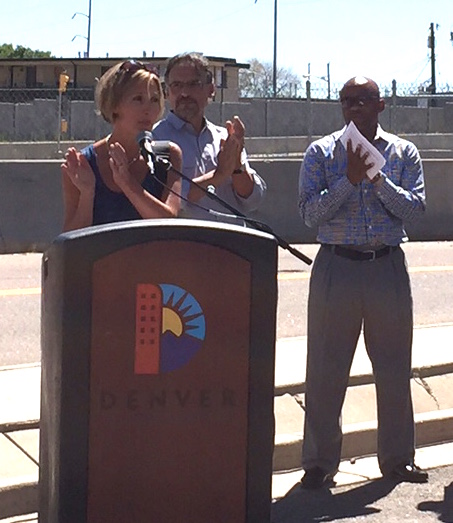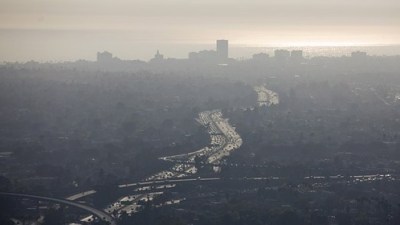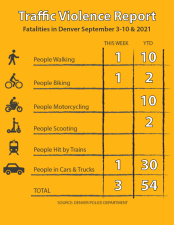Hancock Administration Poised to Adopt Vision Zero Plan

Denver Public Works Transportation Director Crissy Fanganello told the City Council Tuesday that her agency will create a Vision Zero plan — a roadmap to eliminate traffic deaths — as long as the council approves the allocations in Mayor Michael Hancock’s 2016 budget.
The news came during a presentation on DPW’s budget, which includes $350,000 to create the plan and a public marketing campaign that will “formally declare” Denver as a Vision Zero city.
There’s no timetable yet for the city’s plan to eliminate traffic fatalities and serious injuries. Still, the briefing erased doubt that the Hancock administration would join other American cities in declaring that traffic deaths are entirely preventable, rather than inevitable facts of life.
“We’ve been working for many years on improving safety throughout the city,” Fanganello said. “This is formalizing our commitment to safety overall. One of the first things we’d like to do is to create a Vision Zero Denver plan so we can understand what information we have, where we have gaps in our analysis, and really get a lot of city departments beyond just the Department of Public Works involved.”
City Councilor Kevin Flynn asked Fanganello if Denver is truly prepared, given that some Vision Zero plans call for lower speed limits. In New York, the default speed limit is 25 mph and Seattle‘s Vision Zero plan calls for a 20 mph speed limit on residential streets.
“I love the goal of zero traffic deaths, but are we prepared for the fact that most people in Denver don’t drive that way?” Flynn said.
Flynn misses the point. The fact that most people in Denver don’t drive at a safe speed is a huge reason to adopt a Vision Zero plan, which will then change driver behavior. Enforcing traffic laws and redesigning streets to prevent people from driving at fatal speeds are key elements of street safety policy in cities around the globe. Simple things like making a street feel tighter by planting trees or painting narrower travel lanes can influence people to drive more safely.
Denver is ready to begin its Vision Zero endeavor, Fanganello said, but planners are in the nascent stages. “There isn’t a program that you just sign up for. We’re going to develop a program that is unique for Denver,” she said.
Denver averaged 48 traffic deaths a year in 2013 and 2014, and DPW’s target for next year is modest. Staffers are hoping the first year of the Vision Zero plan, along with some funding to improve the city’s most dangerous intersections, reduces fatalities by 5 percent — fewer than three deaths — in 2016.
Adopting the goal of Vision Zero can signal the beginning of a culture shift, but it’s not a solution in itself. City leaders like Hancock need to show change on the ground before they can claim progress.
Luckily for the Mile High City, others have blazed a trail. Denver should learn from the failures and successes of other cities, and look to its peer city, Seattle, for guidance.
The public demanded a Vision Zero plan, Hancock listened, and now it’s up to the City Council to approve the money for it — which feels like a formality at this point, given the hopeful tone of Tuesday’s presentation.
“Our goal really is to get zero,” Fanganello said. “And it’s a hard goal to get to. Some people might say it’s an unattainable goal, but it’s the right goal to have.”


